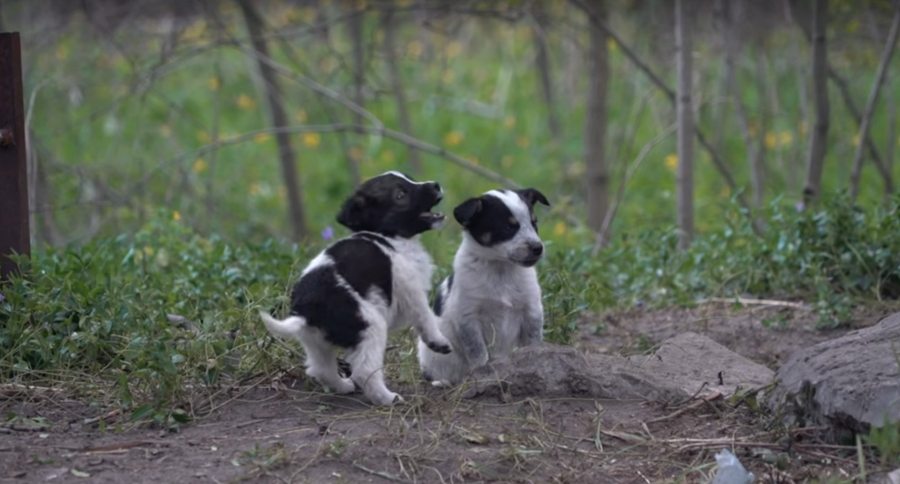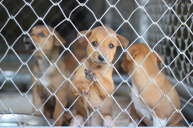The 1986 nuclear accident at the Chernobyl power plant devastated the area, so what does that mean for the hundreds of strays that call the site home?
A Huffington Post report explored the lives of these dogs, all strays who live with one another in a 1,000 square-mile area known as the "exclusion zone" under the care of volunteers.
Because the dogs are considered to be radioactive, the amount of dangerous radioactive particles on their fur and inside their bodies is still unknown, volunteers are forbidden from touching them; however, they are taking measures to help these forgotten souls.
Watch "Puppies of Chernobyl," a short documentary about the radioactive puppies uploaded to YouTube by filmmaker Drew Scanlon.
The volunteers' first order of business is to spay and neuter all of the pups who live near the former Chernobyl nuclear power plant. With help from the Clean Futures Fund, a five-year plan to trap, spay, and release all of the dogs and stray puppies is underway.
A team of veterinarians and volunteers from as far away as the U.S. are working with Ukraine officials to set up food and clean water stations. They are also providing medical care for the dogs, which are considered radioactive as well, in a makeshift veterinary clinic.
The dogs suffer from lack of food and water and are also targets for other wild animals that still roam in the area. While the dogs are still considered overpopulated, they usually don't survive in the Chernobyl exclusion zone for long.
"I think there will always be a population of dogs in the area," Lucas Hixson, a radiation specialist and Clean Futures Fund co-founder, told HuffPost. "But hopefully, we can get down to a manageable population where they can have a good quality of life."
So what makes a radioactive dog different than any other? Not much! They, especially the puppies, enjoy rolling in the dirt, drinking from puddles, playing with one another, and getting belly rubs by humans.
While the volunteers are well aware of the dangers of radiation exposure from handling the dogs, many have developed strong bonds with certain pups and have even adopted them despite not being able to take them home.
To learn more or contribute to the fundraising effort for the Dogs of Chernobyl, you can visit their GoFundMe page here.
Would you adopt a stray dog you couldn't bring home? What do you think of the Chernobyl dogs? Let us know in the comments section below.
WATCH NOW: This Island Is Filled with Adoptable Puppies




